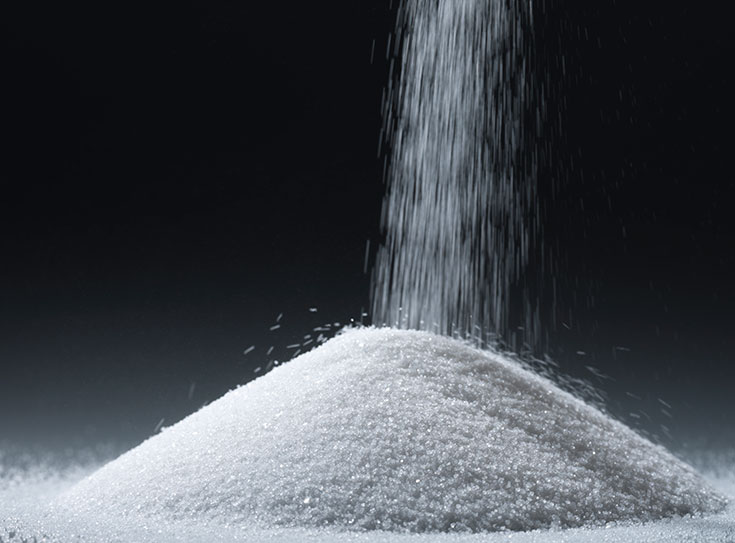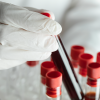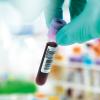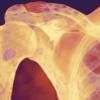Biochemistry lead Dan Kelly looks at sodium citrate contamination and how to identify the condition.

Hypernatraemia is defined as high concentration of serum sodium in the plasma, typically above 145 mmol/L. The condition represents a deficit total body water relative to sodium that can arise due to a number of different causes, including free water loss, reduced intake of water, and sodium overload. Hypernatraemia is a common condition among hospitalised patients, particularly in intensive care units, and is an independent risk factor for mortality. Mild cases of hypernatraemia (145 – 150 mmol/L) are frequently asymptomatic but severe hypernatraemia (>155 mmol/L) can cause significant central nervous system dysfunction that clinically presents with symptoms of encephalopathy (headache, nausea, confusion, lethargy) that can progress to seizures, coma and death, if the condition is left untreated. Thus, severe hypernatraemia requires urgent medical treatment and is a cause of clinical concern.
In the clinical chemistry laboratory, it is critical during technical validation that severe hypernatraemic results are verified to ensure accurate reporting of sodium levels. Any inaccurate reporting of sodium levels may lead to unnecessary clinical investigations and treatment that is detrimental to the patient. Sodium results that are not truly reflective of the patients blood serum is called pseudohypernatraemia. Common causes of pseudohypernatraemia include: venepuncture around intravenous infusions, as well as sample evaporation, particularly with low volume samples that concentrates sodium as water is lost. Rare causes of pseudohypernatraemia include: hypoproteinaemia or hypolipidaemia due to indirect ion selective electrodes, and sodium citrate contamination, which is the focus of this article.
As mentioned, a rare cause of spurious hypernatraemia (psudohypernatraemia) is sodium citrate contamination. Sodium citrate is a preservative solution in blood tubes used for coagulation testing. An alternative source of such contamination is the use of Tri-sodium citrate (Citra-lock) used to lock central venous catheters to maintain patency
of catheters between dialysis.
Citra-lock has broad spectrum antimicrobial and anti-yeast properties that make it effective at reducing infections. This solution has a high concentration of sodium (tri-sodium 420 mmol sodium/L) therefore, any contamination will spuriously elevate sodium levels. Unlike EDTA contamination, that is frequently encountered in the biochemistry laboratory due to incorrect order of blood draw, sodium citrate does not contaminate samples in the same way. Such contamination is due to either direct pouring into a biochemistry sample, or inappropriate sampling of sodium citrate.
If pseudohypernatraemia is suspected additional investigations will help identify the true cause of sodium elevation. For example, sodium citrate is a weak chelator. This will spuriously elevate sodium whilst lowering calcium, magnesium, iron and alkaline phosphatase. However, because of its weak chelator properties, mild contamination can appear equivocal. Instead measurement of chloride and measured osmolality by freezing point depression can accurately determine sodium citrate contamination. Physiologically, serum chloride and sodium elevate and decrease together with a 1:1 ratio in the extracellular fluid. However, when a sample has been contaminated with sodium citrate serum chloride levels are uncharacteristically low (<90 mmol/L). The decrease in chloride is due to a dilution effect of the preservative as well as due to the anion: cation dissociation of sodium chloride. In this instance the contamination produces a negative osmolar gap (calculated osmolarity less than measured osmolality) that is not associated with any clinical condition and is useful when determining sodium citrate contamination.
Clinical case
A recent biochemical profile on a 62-year-old female in primary care originally displayed severe hypernatraemia with ionic concentrations greater than 160 mmol/L (167 mmol/L). Confirmation of the result with repeat testing excluded ion selective electrode performance issues as the cause of hypernatraemia. Further investigation of recent electrolyte results identified that the patient had normal electrolyte levels, and there was no clinical condition found that could explain elevated sodium levels. Therefore, additional testing was carried out to eliminate sodium citrate contamination before technical authorisation. Additional tests included: serum calcium, chloride, and measured osmolality. The results of the tests identified that the sample had been contaminated with sodium citrate, with a chloride result of 92 mmol/L, a total calcium level of 1.96 mmol/L and a measured osmolality of 291 mOsm/L.
When referencing recent history of results calcium and chloride levels were inappropriately low, with chloride unusually low compared to serum sodium (only seen in metabolic acidosis), and as this is a primary care patient with no clinical details referencing acid-base disorders the results appeared spurious. The patient also had a negative osmolar gap (-52) as the measured result was 291 and calculated 343. Therefore, the results were excluded due to sodium citrate contamination and repeat bloods were sent.
In addition to the clinical case study discussed, sodium citrate can have an impact on common assays used to determine such contamination. Patient pooled serum (1ml) was spiked with increasing volumes of sodium citrate to display how the solution affects different assays. Sodium levels gradually rise with increasing volume of sodium citrate because additional sodium is being introduced into the sample, as such the calculated osmolarity will also elevate. Calcium and chloride levels decrease gradually with increased volume of spiked sodium citrate, with chloride levels lowering due to a dilutionary effect and the dissociation ratio of sodium chloride. And calcium lowers because sodium citrate is a weak chelator, where citrate forms calcium citrate complexes disrupting the blood clotting mechanism.
To conclude, unrecognised pseudohypernatraemia due to sodium citrate contamination can lead to inappropriate hospital attendance and investigation, as well as misdiagnosis and unnecessary treatment. Therefore, biomedical scientists need to be aware of any suspected cases when the results do not match previous history, the clinical details are not indicative of hypernatraemia and there are no medications associated with hypernatraemia. In suspected cases of pseudohypernatraemia, biomedical scientists can perform investigations that will help to determine whether the raised sodium is a spurious result, or the patient has true hypernatraemia. As previously highlighted, calcium and chloride levels should be uncharacteristically low. The osmotic gap will be negative, with the calculated osmolality higher than the measured osmolarity, which is not seen in any pathological conditions. Performing these technical checks will ensure accurate and reliable reporting of hypernatraemic patients, and will ensure that the laboratory is accurately determining any suspected cases of pseudohypernatraemia due to sodium citrate contamination.
Dan Kelly is Biochemistry Lead and Deputy Manager at Spire Hospital Leeds




